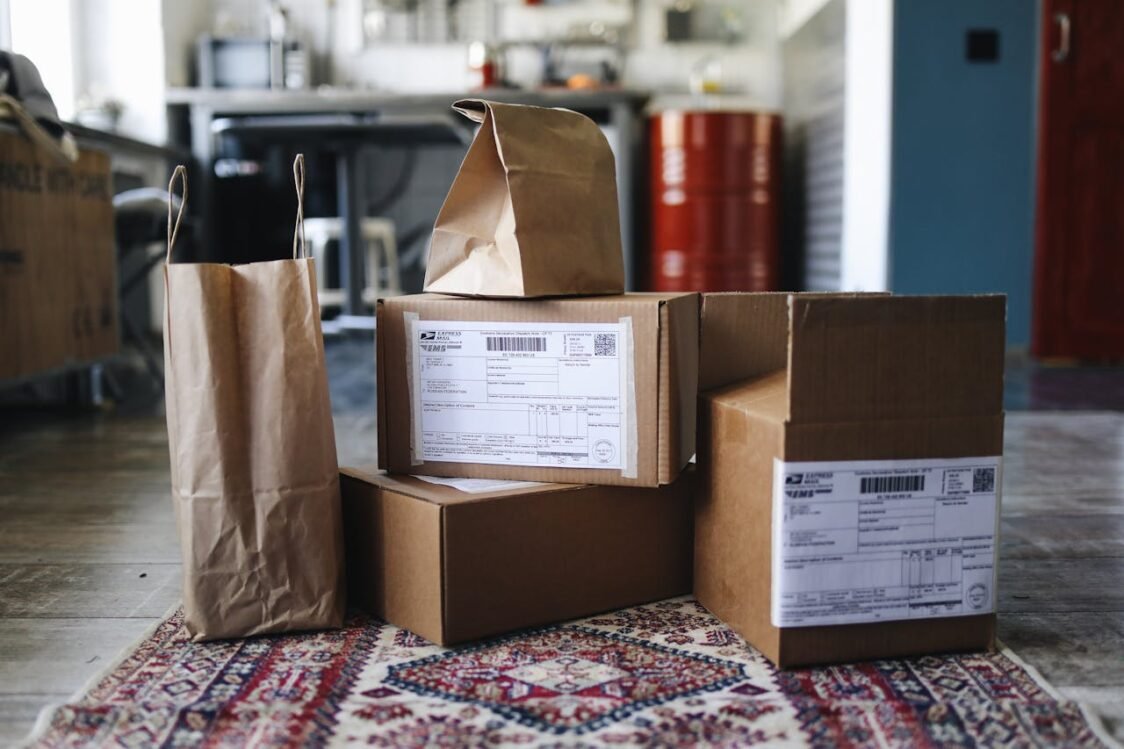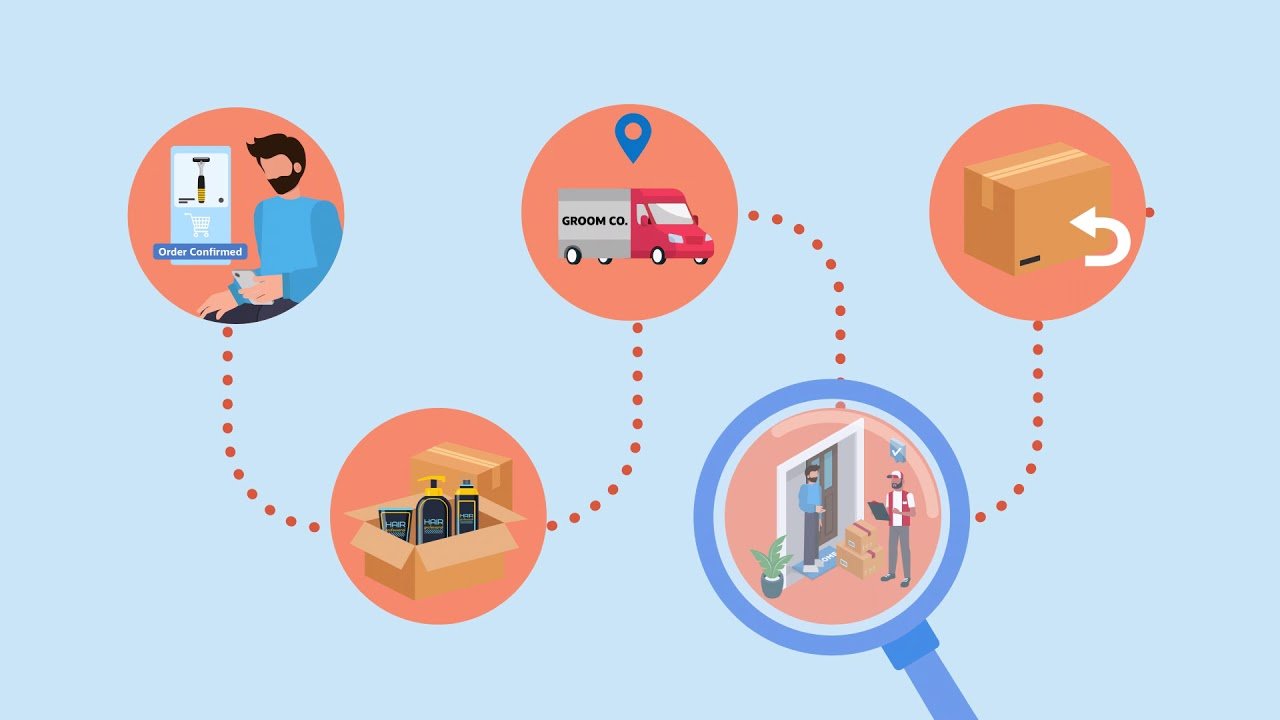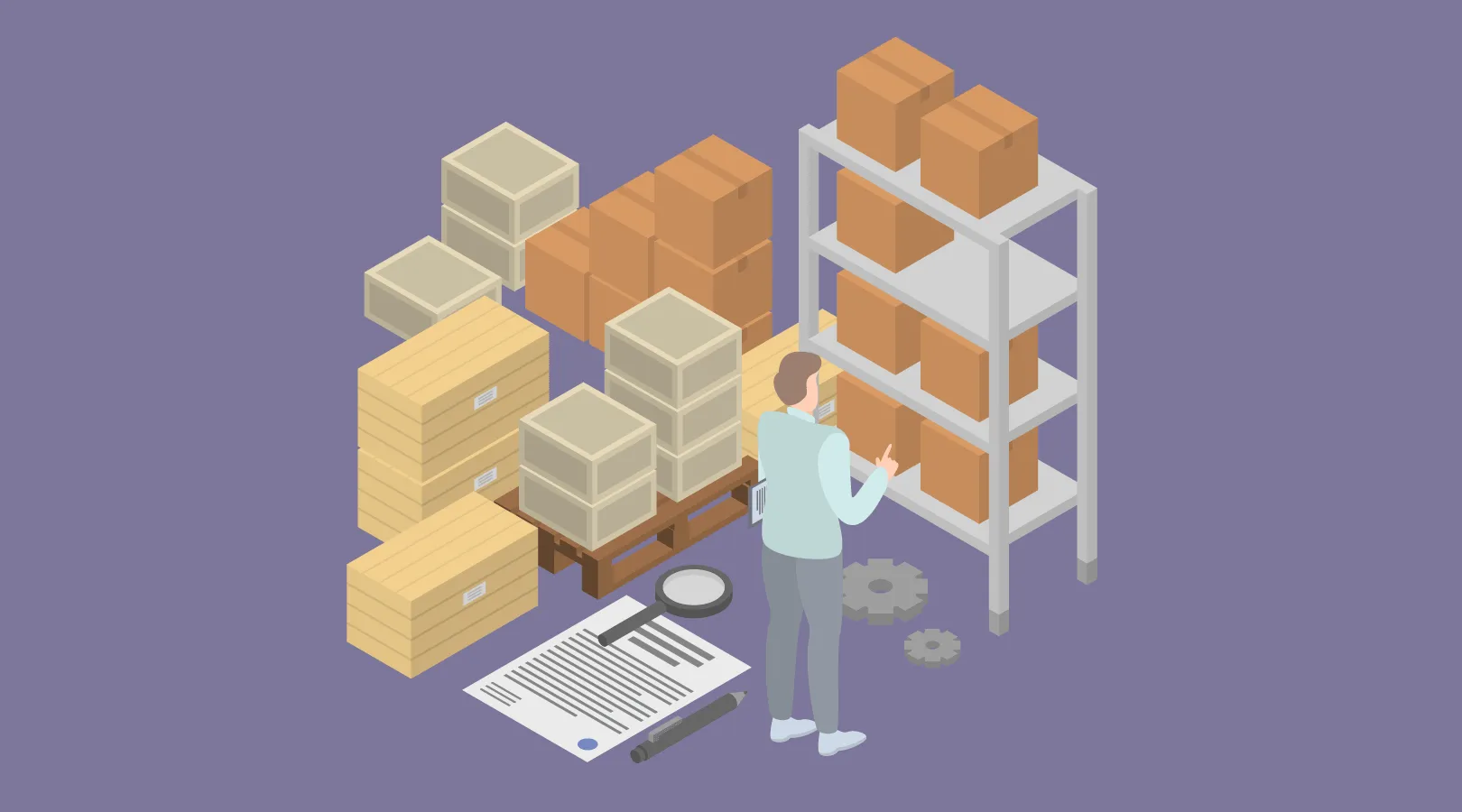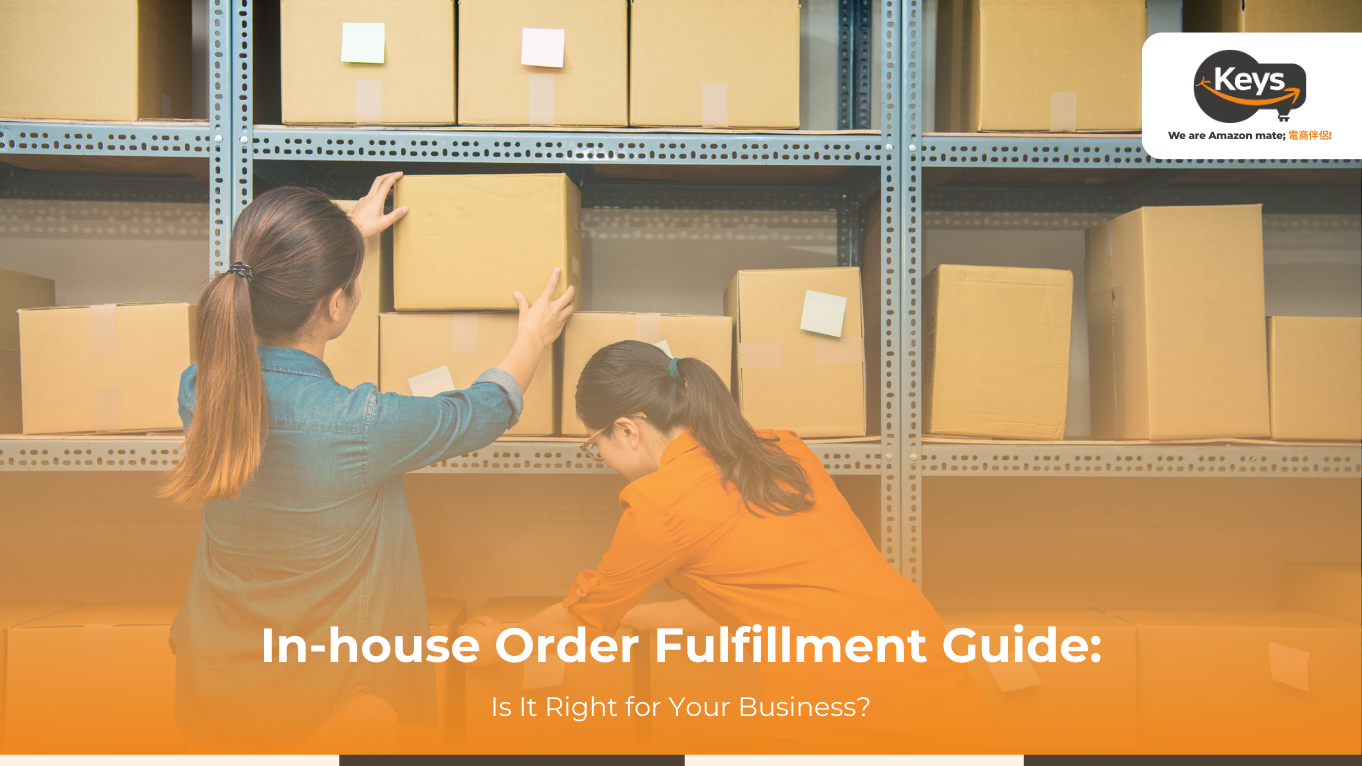In-house order fulfillment gives businesses full control over inventory storage, packing, and shipping operations. This fulfillment model can offer cost savings, flexibility, and stronger brand control – but it also comes with challenges. In this article, we’ll explore the pros, cons, and processes of in-house order fulfillment, along with tips to determine if it’s the right strategy for your business.
What is In-house order fulfillment?
In-house order fulfillment is a logistics strategy where a business manages the entire fulfillment process internally using its own staff, systems, and storage facilities. This includes overseeing inventory management, picking and packing orders, shipping, and handling returns without relying on third-party providers.
By opting for in-house order fulfillment, companies gain full control over their operations, enabling greater flexibility, customized packaging, and a tailored customer experience. However, this method also requires significant investment in infrastructure, labor, and technology to ensure efficiency and scalability.

Pros & Cons of In-house order fulfillment
In-house order fulfillment offers ecommerce businesses full control over their logistics operations, but it also presents notable challenges—especially as a brand scales. Below is a breakdown of the key advantages and disadvantages of managing fulfillment internally:
Advantages:
- Improved turnaround times: With full visibility into operations, brands can quickly address bottlenecks and enhance order processing speed without relying on external partners.
- Enhanced customer satisfaction: In-house fulfillment allows for customized packaging, accurate order handling, and faster delivery—leading to a more consistent and branded customer experience.
- Direct cost savings: By avoiding third-party logistics (3PL) fees and managing their own shipping, businesses may negotiate better carrier rates and reduce handling costs.
Disadvantages:
- High infrastructure costs: Setting up and maintaining warehouses, equipment, and staffing can be costly – especially for small or growing businesses.
- Operational burden: Handling inventory, order processing, and returns in-house requires significant time and internal resources, potentially diverting attention from core business growth activities.
How does the Self-Fulfillment process work?
The self-fulfillment process, also known as in-house order fulfillment, involves managing the entire order processing cycle internally, from inventory management to shipping. This approach is particularly common among small to medium-sized businesses that prefer to maintain control over their logistics operations. Here’s how the process typically works:
- Order Processing: When a customer places an order, the business must promptly receive and process it. This involves verifying the order details and ensuring that the items are in stock. An efficient order management system is crucial to minimize delays and errors .
- Inventory Management: Businesses need to keep track of their inventory levels to ensure they can fulfill orders without running out of stock. This may involve regular audits and the use of inventory management software to monitor stock levels in real-time.
- Picking and Packing: Once the order is confirmed, the next step is to pick the items from the inventory. After picking, the items are packed securely to prevent damage during shipping. The choice of packing materials can significantly impact shipping costs and customer satisfaction.
- Shipping: After packing, the orders are labeled and shipped to the customer. Businesses often need to choose reliable shipping carriers to ensure timely delivery. This step may also involve providing tracking information to customers.
- Customer Service: Throughout the fulfillment process, maintaining communication with customers is essential. This includes providing updates on order status and handling any inquiries or issues that may arise.

When should your business use in-house fulfillment?
In-house order fulfillment is often the preferred model for early-stage or resource-constrained businesses looking to maintain control and reduce upfront costs. Here are common scenarios where self-fulfilling orders may be the most practical choice:
- Startups managing fulfillment independently: New businesses often choose in-house fulfillment to retain full control over operations while establishing internal workflows and standards.
- Limited budget: Cash-strapped businesses may not have the capital to invest in third-party fulfillment services, making it more feasible to use their own labor and resources.
- Low order volumes: For businesses processing fewer than 50–100 orders per month, the cost of outsourcing can outweigh the benefits, making in-house fulfillment a more financially sound option.
Top tips for successful in-house order fulfillment
To achieve successful in-house order fulfillment, businesses must implement effective strategies that streamline operations and enhance customer satisfaction. Here are some top tips to consider:
- Utilize technology: Implementing a robust Warehouse Management System (WMS) can significantly improve inventory tracking and order processing. This technology helps automate tasks, reduces human error, and provides real-time visibility into stock levels.
- Organize your warehouse: A well-organized storage space is crucial for efficient picking and packing. Use clear labeling and logical layouts to minimize the time spent locating items. Consider adopting a systematic storage method that aligns with your order volume and product types.
- Implement barcode systems: Using barcodes for inventory management can streamline the tracking process. This technology allows for quick scanning of products, reducing the time spent on manual entry and minimizing errors in order fulfillment.
- Maintain a dedicated fulfillment area: Designating a specific area for order fulfillment activities can enhance productivity. This space should be equipped with all necessary tools and materials to facilitate efficient packing and shipping.
- Establish clear shipping policies: Clearly defined shipping policies help set customer expectations regarding delivery times and costs. Make this information easily accessible on your website to build trust and transparency with your customers.
- Train your staff: Investing in training for your fulfillment team is essential. Well-trained employees are more efficient and can handle various tasks, from inventory management to customer service, effectively.
- Monitor performance metrics: Regularly assess key performance indicators (KPIs) such as order accuracy, fulfillment speed, and customer satisfaction. This data can help identify areas for improvement and optimize your fulfillment processes.

How much does In-house order fulfillment cost?
The cost of in-house order fulfillment can vary significantly based on several factors, including the scale of operations, the type of products being handled, and the efficiency of the fulfillment processes. Here are the primary components that contribute to the overall costs:
- Labor costs: This includes wages for employees involved in receiving, picking, packing, and shipping orders. Labor costs can be substantial, especially during peak seasons when additional staff may be required.
- Storage costs: Businesses need to account for the expenses associated with warehousing, including rent or mortgage payments for the facility, utilities, and maintenance. The cost of storage can vary depending on the location and size of the warehouse.
- Packaging costs:The materials used for packaging, such as boxes, tape, and cushioning, contribute to fulfillment costs. Choosing high-quality packaging can enhance customer satisfaction but may increase overall expenses.
- Shipping costs: These include the fees charged by carriers for delivering packages to customers. Shipping costs can fluctuate based on factors such as package weight, dimensions, and destination.
- Technology and Software: Investing in inventory management systems and other technologies to streamline operations can incur initial setup costs, but they can lead to long-term savings by improving efficiency.
- Overhead costs: Additional expenses such as insurance, equipment maintenance, and administrative costs should also be factored into the overall fulfillment budget.
On average, businesses may find that their total in-house fulfillment costs amount to approximately $5,615 per month, translating to about $14.04 per order, depending on the volume of orders processed.

In-House vs. Outsourced Fulfillment: Which is right for your business?
Choosing between in-house order fulfillment and outsourcing depends on your business’s operational capacity, growth trajectory, and long-term goals. Each model offers distinct advantages and challenges, and the right solution should align with your current needs and future plans. Consider the following factors:
- Order volume & budget: In-house fulfillment may work well for low-volume businesses with limited budgets, while high-volume sellers may benefit from a 3PL’s scalability and cost-efficiency.
- Resources & infrastructure: Businesses with existing warehouse space, trained staff, and logistics expertise may successfully manage fulfillment internally. Those lacking such resources may find outsourcing more practical.
- Customer expectations: If fast delivery and high service standards are essential, outsourcing to a fulfillment provider with established networks can improve performance.
- Brand control vs. scalability: In-house fulfillment allows for custom packaging and a branded experience, while outsourcing offers flexibility, international reach, and market expansion.
- Test & adapt: Businesses can run pilot programs with 3PLs or use a hybrid model to balance control and scalability, making data-driven adjustments over time.
Ultimately, whether you choose in-house order fulfillment or a third-party solution, regularly reviewing your fulfillment performance and adapting to changing demands is key to sustaining long-term ecommerce success.

The alternative to in-house fulfillment: outsourcing order fulfillment with Keys Logistics
While in-house order fulfillment offers control and flexibility, it can be time-consuming and costly as your business scales. That’s where Keys Logistics comes in – offering a smart, scalable, and cost-efficient alternative for ecommerce businesses seeking to streamline their operations. With years of experience and a tech-driven approach, we help brands shift from manual fulfillment to a seamless outsourced solution designed for growth.
Why outsource with Keys Logistics?
- Smart fulfillment system: Our technology optimizes inventory storage, order processing, and delivery workflows to reduce costs and speed up fulfillment.
- Strategic warehouse locations: With fulfillment centers in Ontario (USA) and other key global trade hubs, we help minimize delivery times and logistics expenses.
- Multi-platform integration: Easily sync with Shopify, Amazon, eBay, TikTok Shop, and more – ensuring smooth operations and accurate order tracking.
- Custom logistics solutions: We offer tailored services such as branded packaging, labeling, and flexible shipping options to match your business needs.
- 24/7 customer support: Our dedicated support team is always available to resolve issues quickly and ensure a consistently excellent customer experience.
- Proven reliability: With over 10 million orders processed annually and a 99.5% on-time rate, Keys Logistics is trusted by both emerging brands and global enterprises.
- Built on quality and innovation: Guided by our QUEST framework (Quality, Uniformity, Experience, Service, Technology), we continuously enhance our operations to deliver top-tier logistics performance.
In-house order fulfillment offers greater control, operational flexibility, and potential cost savings – but it also demands careful resource management and process optimization. By weighing the pros and cons, understanding the workflow, and identifying the right time to implement self-fulfillment, businesses can tailor their logistics strategy to match growth stages and customer expectations. Whether you’re comparing in-house vs. outsourced fulfillment, or planning for future scalability, aligning fulfillment choices with your business goals is key to long-term success.
Get expert guidance and scalable solutions with Keys Logistics – your trusted partner in modern supply chain management. Reach out today and discover how we can support your growth, every step of the way.












 Tiếng Việt
Tiếng Việt 中文 (中国)
中文 (中国)

